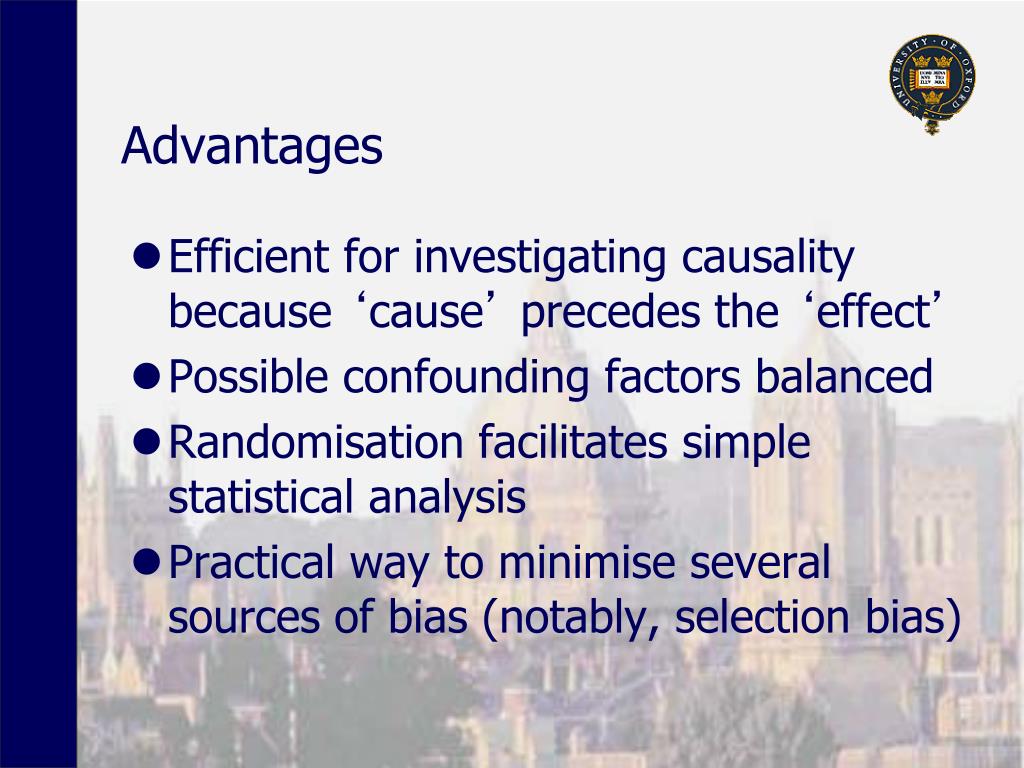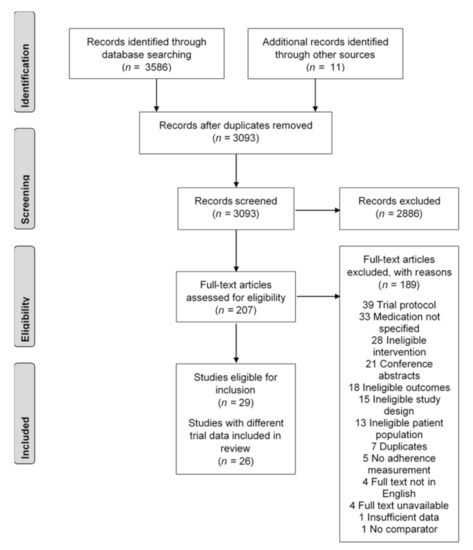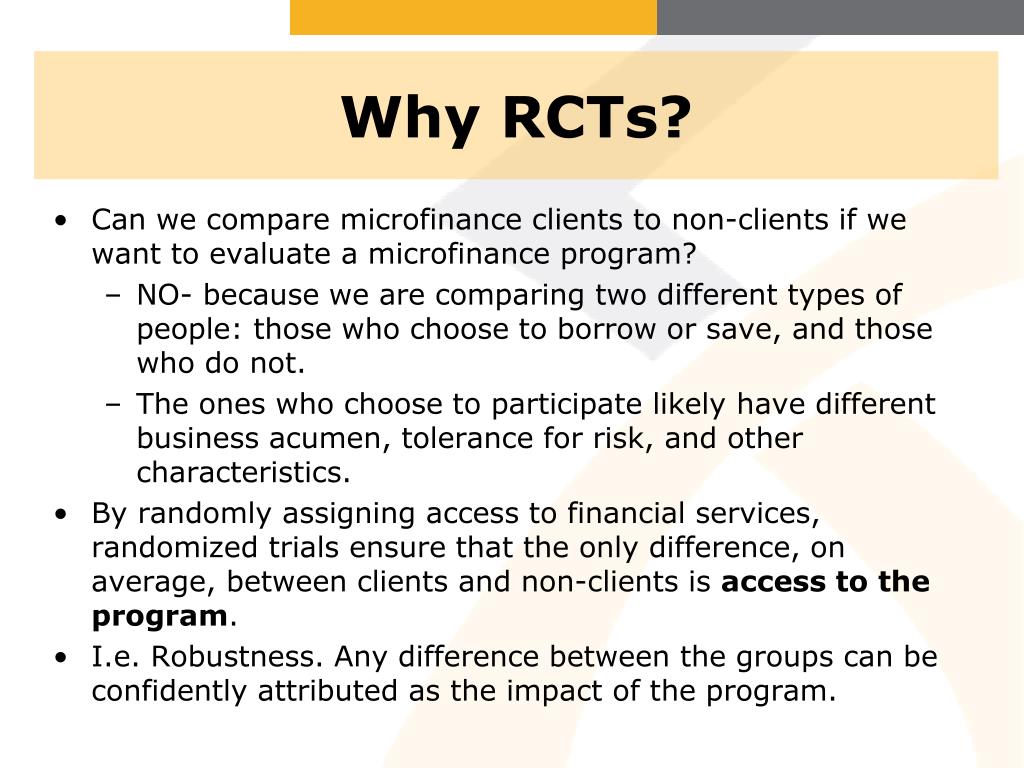Randomized Control Trial Presentation
| Introduction to Randomized Control Trial (RCT) | ||
|---|---|---|
| Randomized Control Trial (RCT) is a type of scientific experiment used to evaluate the effectiveness of an intervention or treatment. RCTs are considered the gold standard in research methodology due to their ability to minimize bias and provide reliable evidence. RCTs involve randomly assigning participants into two or more groups, where one group receives the intervention (treatment group) and the other serves as a control group. | ||
| 1 | ||
| Key Features of RCTs | ||
|---|---|---|
| Randomization: Participants are randomly allocated to the treatment or control group, ensuring that each group is similar in terms of baseline characteristics. Control group: The control group receives either a placebo or standard treatment, allowing for a comparison to measure the intervention's impact. Blinding: Blinding techniques, such as single-blind or double-blind, are employed to reduce bias and ensure the study's validity. | ||
| 2 | ||
| Advantages of RCTs | ||
|---|---|---|
| Causality: RCTs can establish a cause-and-effect relationship between the intervention and outcome, providing strong evidence for policy and decision-making. Internal validity: Randomization and blinding techniques minimize bias, enhancing the study's internal validity. Replicability: RCTs can be replicated by other researchers, allowing for the validation of findings and generalizability. | ||
| 3 | ||
| Limitations of RCTs | ||
|---|---|---|
| External validity: RCTs may not always reflect real-world conditions, limiting their generalizability to broader populations or settings. Ethical considerations: Some interventions may be ethically challenging to withhold from the control group, making it difficult to conduct an RCT. Cost and time: RCTs can be expensive and time-consuming due to the need for large sample sizes, long follow-up periods, and rigorous data collection. | ||
| 4 | ||
| Design Considerations in RCTs | ||
|---|---|---|
| Sample size calculation: Adequate sample size is crucial to ensure the study has enough statistical power to detect differences between groups. Randomization methods: Various randomization techniques, such as simple randomization, stratified randomization, or block randomization, can be used. Outcome measures: Precise and reliable outcome measures need to be selected to assess the intervention's effectiveness accurately. | ||
| 5 | ||
| Steps in Conducting an RCT | ||
|---|---|---|
| Research question formulation: Clearly define the research question and the objectives of the study. Ethical approval: Obtain ethical clearance from relevant research ethics committees. Participant recruitment: Recruit eligible participants and obtain informed consent. | ||
| 6 | ||
| Data Analysis and Interpretation | ||
|---|---|---|
| Statistical analysis: Analyze the collected data using appropriate statistical methods such as t-tests, chi-square tests, or regression analysis. Assessment of outcomes: Compare the outcomes between the treatment and control groups to evaluate the intervention's effectiveness. Interpretation of results: Interpret the statistical findings, considering any limitations or biases that may have influenced the results. | ||
| 7 | ||
| Examples of RCTs | ||
|---|---|---|
| The landmark Nurses' Health Study conducted an RCT to evaluate the effects of hormone replacement therapy on cardiovascular disease risk in postmenopausal women. The Oregon Health Insurance Experiment used an RCT to assess the impact of Medicaid on healthcare utilization, financial strain, and health outcomes. The Abecedarian Project conducted an RCT to examine the long-term effects of high-quality early childhood education on intellectual and socio-emotional development. | ||
| 8 | ||
| Applications of RCTs | ||
|---|---|---|
| Medicine and healthcare: RCTs are widely used to evaluate the effectiveness of new drugs, treatments, or medical procedures. Education: RCTs can assess the impact of different teaching methods or interventions on student learning outcomes. Social sciences: RCTs are increasingly employed to study interventions related to poverty alleviation, public policy, and behavioral interventions. | ||
| 9 | ||
| Conclusion | ||
|---|---|---|
| Randomized Control Trials (RCTs) provide a robust methodology for evaluating the effectiveness of interventions. RCTs offer high internal validity, enabling researchers to establish cause-and-effect relationships. Despite their limitations, RCTs play a crucial role in evidence-based decision-making and advancing scientific knowledge. | ||
| 10 | ||
| References (download PPTX file for details) | ||
|---|---|---|
| Schulz KF, Altman DG, Moher D, CONSORT Group.... Freedman B. Equipoise and the ethics of clini... Pocock SJ. Clinical Trials: A Practical Appro... |  | |
| 11 | ||








